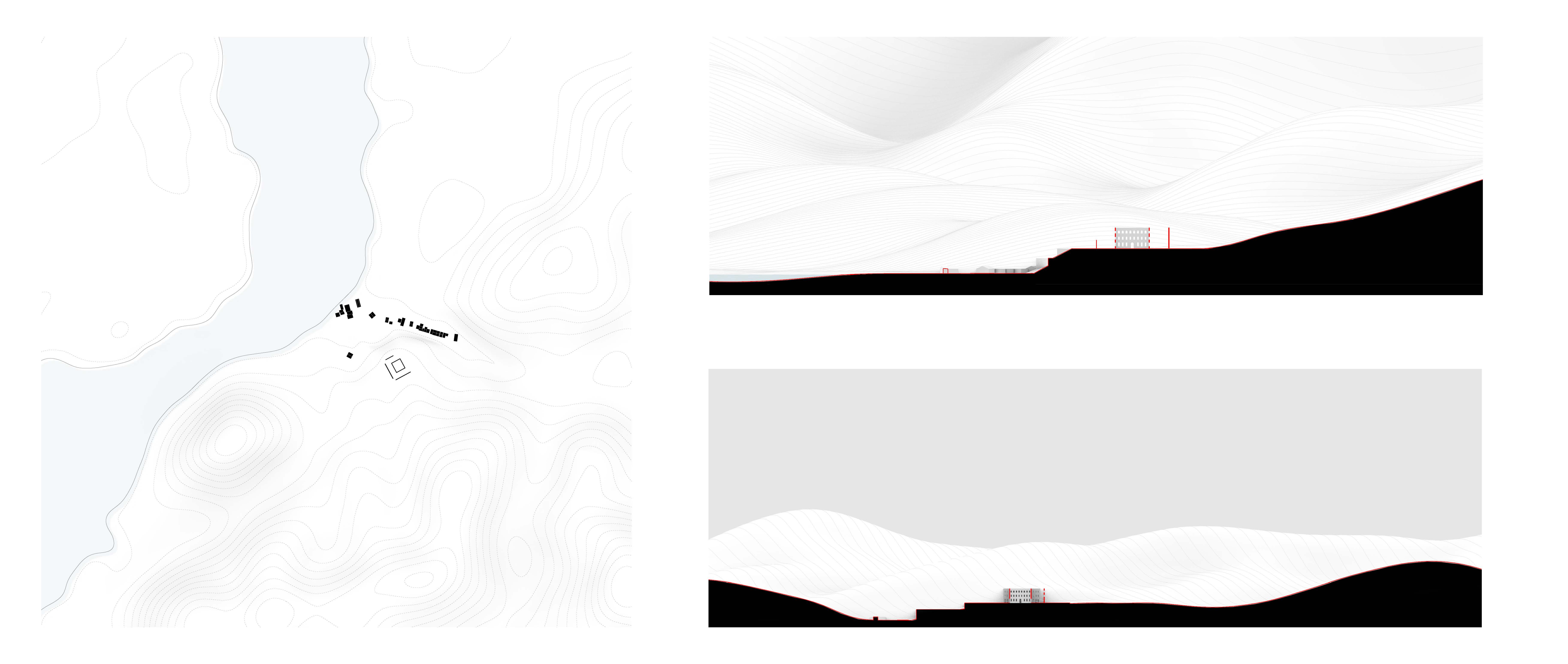Space of Absence :
Transmutation of Cultural Forces
Project year: 2023
Educational Project
Site Location: Bahia, Brazil
Critic: Mario Gooden
Partnered with Jelvis Jiao
Portugal started to expand their colonial power in the 15th century and during the 16th century, they landed in Bahia and imported sugarcane, cotton, gold into Brazil, which consequently makes Brazil the leading producer of sugar. This also marks the beginning of the Transatlantic Slave Trade System, forcing the enslaved Africans as the cheap labor to serve the sugar industry and ultimately fulfill Portuguese political end. These enslaved Africans at the same time brought their cultural traditions to Bahia and later transmuted with the Brazilian culture.
The Portuguese expanded their power and brought the African slaves to the town São Francisco do Conde in 1559. In 1655 The town was ruled by the Benedictine monks. Sugar cane exportation had become an integral part of their income. In 1797, The Benedictine monks petitioned to build the São Bento Dos Lages Sugarcane plantation in addition to their previously owned sugar mills. The São Bento de Sergipe do Conde sugar plantation was later converted into the Imperial Agriculture Institute of Bahia.
The Imperial School of Agriculture of Bahia was established in 1875 under the direction of Dom Pedro II. The site was primarily for sugarcane plantation and the primary goal and agenda of establishing this school is to “modernize” and promote “the poor agricultural productivity” and “technological backwardness” . The school was fully abandoned in 1958 and is currently a historical preservation site in the North-West of Salvador situated upon a small hill in a rural context with a great amount of vegetation. The major parts of the building have fallen and only two thirds of its facade remain.
The site, which was a former sugar plantation and The Imperial Agricultural School of Bahia, contributes to the colonial system as a place that transmitted and manifested colonial mindset and ideas. Despite the colonial ideas imposed within the context of the plantation and the school, The Enslaved and emancipated Afro Brazilian in Bahia had transmuted the culture and cultivated spatial practices of Brazilian resistance through their beliefs and knowledge. Those spatial practices of resistance were Afro Brazilian Religions, the development of art forms like samba and Afro Brazilian music, and Afro Brazilian food and cuisine.
We are proposing Architecture as a living archive to celebrate the resistance of colonial culture and reveal the hidden historic context of the site. The Living archive proposes the idea of cultural preservation in addition to the heritage site that was being preserved as an artifact.
The transmutation of those “counter colonial” ideas were not displayed or told within the space. Only the facade of the school, which is the symbol of the colonial system, remains.
The remaining architecture acts as a mask that has hidden and suppressed the relationship between the history of Afro Brazilian resistance and the colonial history of the school.
Therefore, our Interventions are making spaces for these spatial practices by bringing them to the site. We wanted to create a space for these stories and knowledge to be told alongside the colonial history of the school.
Analysis of the artwork “Formation” by Cyprian Gaillard.
The analysis shows the transmutation of Rosed Ringed Parakeet Birds in Central Düsseldorf.
The analysis shows the transmutation of Rosed Ringed Parakeet Birds in Central Düsseldorf.


















Project Research: Site History and it’s relation to the Colonial History of the town of Sao Francisco de Conde.
The research also shows how Afro-Brazilians in Salvadore had developed Cuisine, Dance & Music and Religion as a form of resistance.











Proposed Interventions: We proposed a series of space for Afro-Brazillian practices of resistance by bringing them to the site.
We wanted to create a space for these stories and knowledge to be told alongside the colonial history of the school.
We wanted to create a space for these stories and knowledge to be told alongside the colonial history of the school.


















